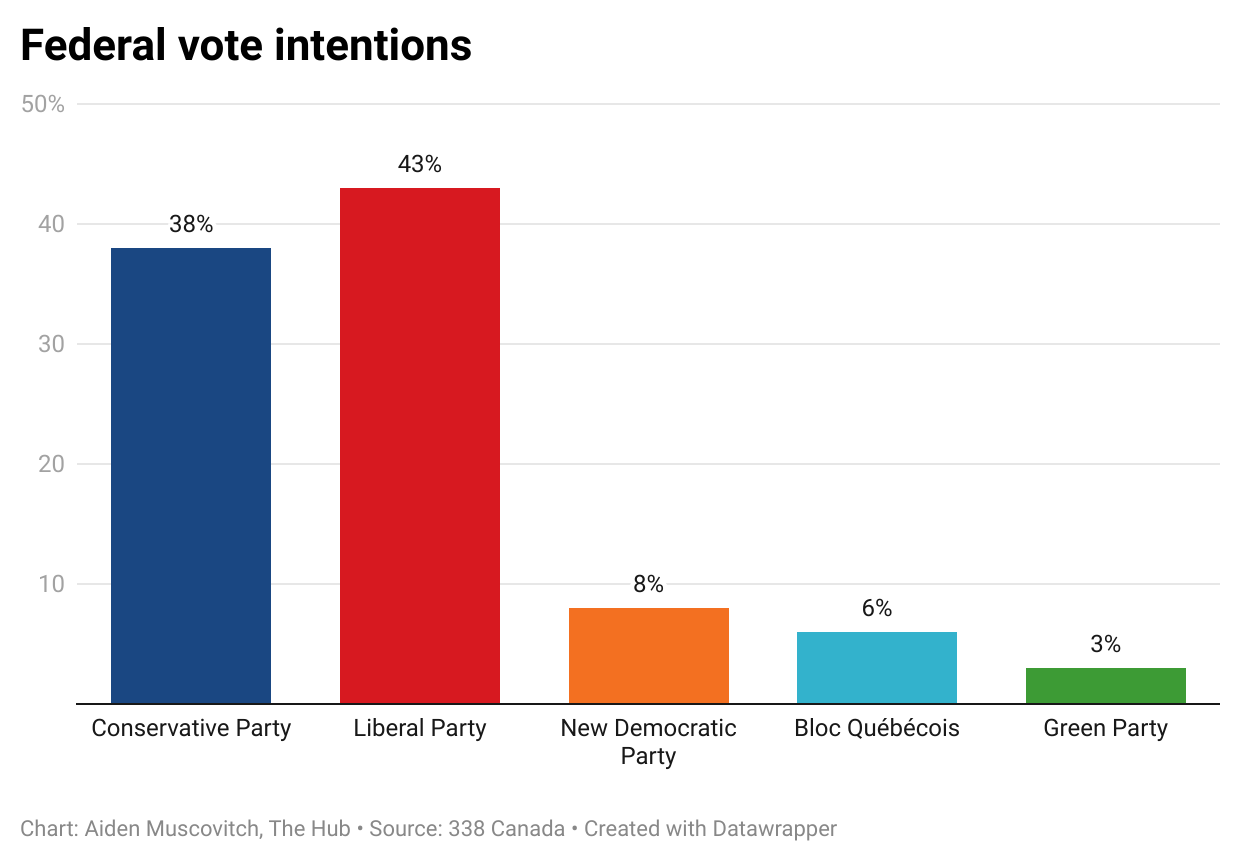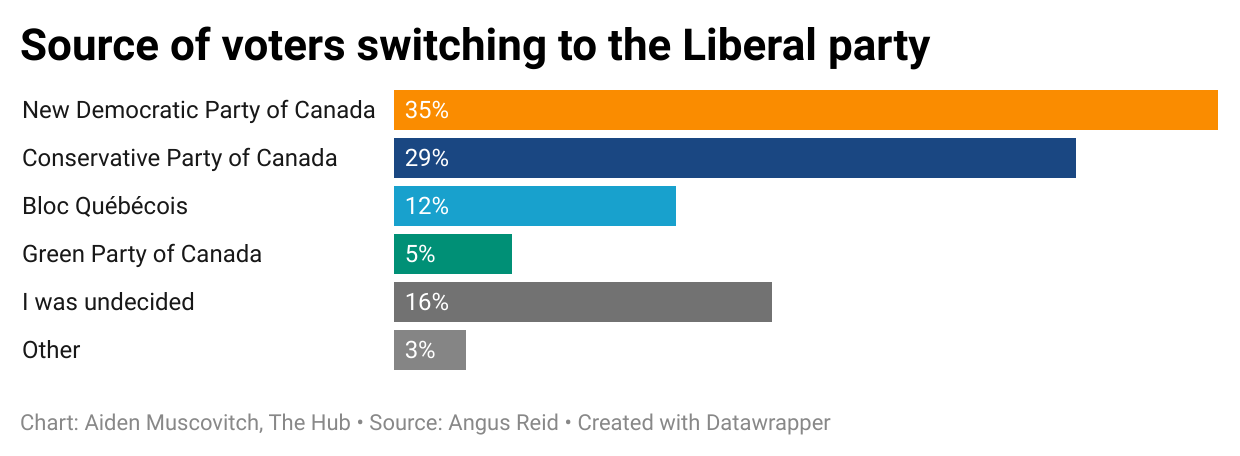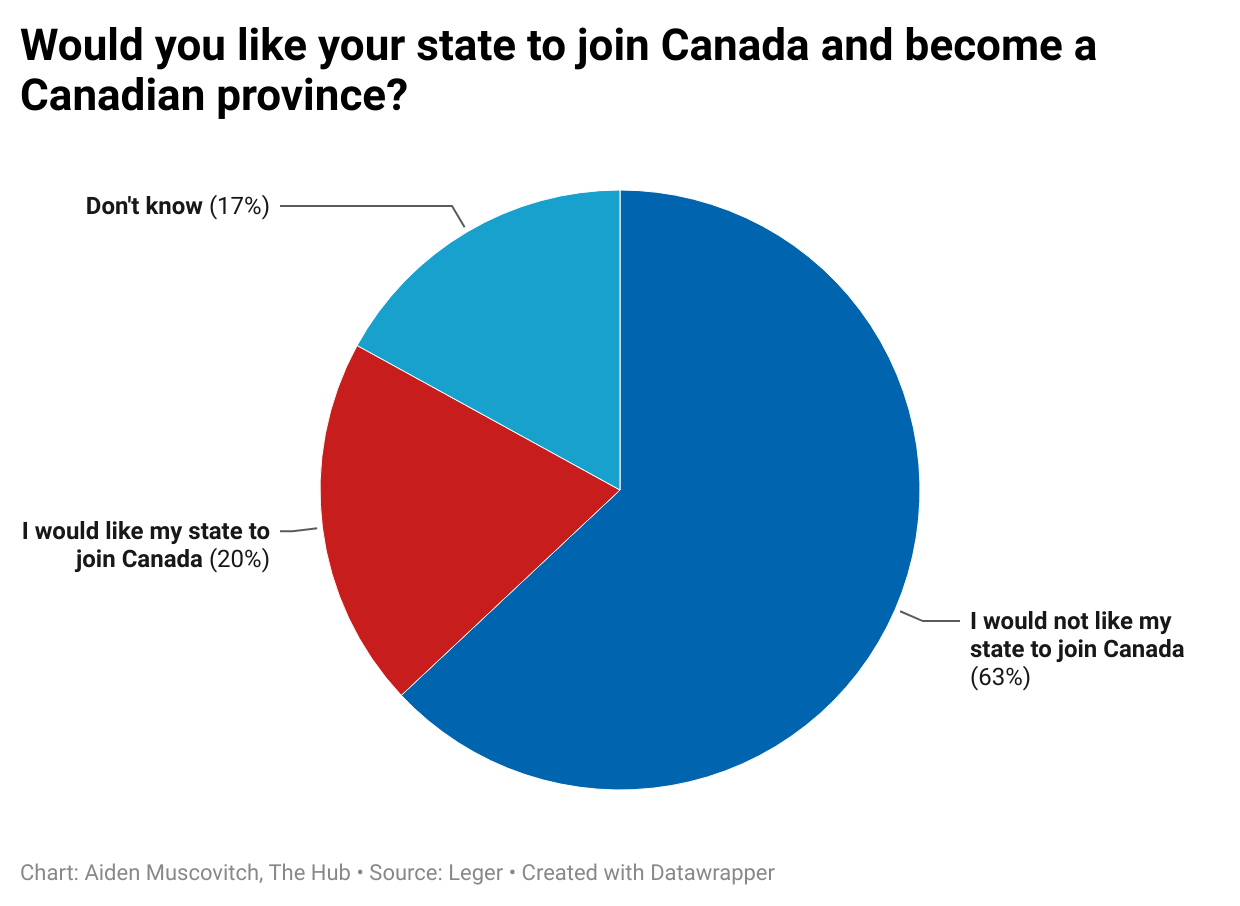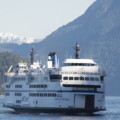This is the (Mid) Week in Polling, your Wednesday dose of interesting numbers from top pollsters in Canada and around the world, curated by The Hub. Here’s what we’re looking at this week.
The Liberals hold their lead
As the campaign enters week two, the Liberals are holding their lead. At the time of writing, the Grits are at a polling average of 43 percent of the voter share, compared to the Conservatives’ 38 percent, according to polling aggregator 338Canada. The NDP is sitting at a mere 8 percent.
There has not been a major poll with a Conservative lead since a Nanos Research poll, which concluded on March 21. That poll had the Conservatives ahead at 36 percent to the Liberals’ 34.
Since the beginning of the election, the highest lead for the Liberals measured by a major pollster was in EKOS’ recent poll, concluded on March 28, which found the Liberals at 48 percent, leading the Conservatives by 12 percent.
Nevertheless, there are still 26 days left in the campaign.
“Anybody who thinks that this thing is over…don’t,” said Ipsos CEO Darrell Bricker in an interview with The Hub. “There are some fairly minor fluctuations in some of these numbers, which can really change things.”
35 percent of new Liberal supporters were NDP supporters, just under 30 percent were Conservative
According to recent polling from the Angus Reid Institute, a significant portion of supporters who have shifted their voting intention to the Liberal Party are coming from both the Left and the Right. Specifically. Thirty-five percent of the switchers previously supported the NDP, while 29 percent supported the Conservative Party. About 16 percent of the switchers were undecided voters. Importantly, 12 percent were Bloc Québécois voters in Quebec, which could mean an extra boost for the Liberals in the province, despite Carney’s lacklustre French skills.
Fifty-six percent of the switchers cited the new Liberal leader, Mark Carney, as a key motivation. Additionally, 51 percent mentioned Donald Trump’s stance toward Canada as a factor. Finally, 30 percent believed that voting Liberal gave the best chance of defeating the Conservatives.
The NDP are under lots of pressure due to the number of Liberal switchers fleeing their party, contributing in large part to their dismal polling numbers.
“Let’s be clear, there’s massive challenges, I’ve got no illusions about that. There’s some serious challenges that we’re up against,” NDP leader Jagmeet Singh said last week.
One in five Americans want to become Canadians
In the midst of 51st state chatter and tariff escalation, a recent Leger survey found that 20 percent of Americans would like their state to join Canada. About 63 percent of Americans would not like their state to join Canada as a province, and 17 percent are unsure. However, only 9 percent of Canadians think a Canadian annexation is likely.
The cohort most interested in becoming part of the Great White North is young adults aged 18 to 34, with 30 percent in favour of their state joining Canada.
Andrew Enns, Leger executive-vice president, said in a National Post article that the U.S. is “incredibly polarized” and that Trump is “extraordinarily unpopular” to many Americans, specifically those who would like their state to join Canada.
“[Trump] and the Republican party’s stance on hot button issues such as abortion rights and immigration would certainly give some Americans reason to find refuge in Canada,” Enns wrote.
The Leger poll also found that one in three Americans, 35 percent, approve of Trump putting tariffs on Canadian imports. In addition, about two-thirds of Americans are worried that the levies will make the cost of their goods rise even higher than they are now. Primarily, Americans are concerned that tariffs will hurt their pocketbooks at places like the grocery store.












